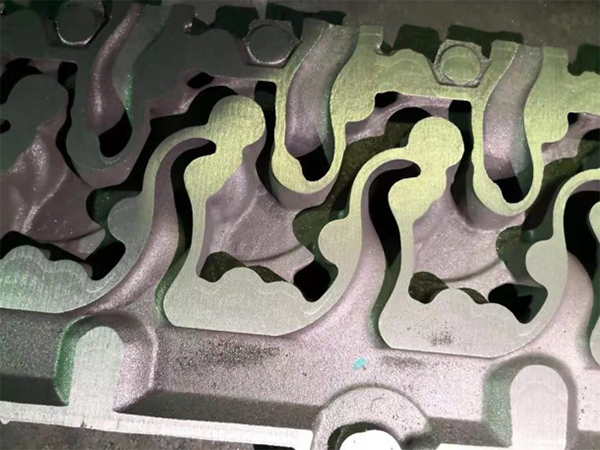Steps in Sand Casting A Comprehensive Guide
Sand casting, one of the oldest and most versatile manufacturing processes, plays an essential role in metalworking today. This method involves creating a mold from sand to produce metal castings. Various industries use sand casting to create everything from small components to large machinery parts. In this article, we will explore the intricate steps involved in the sand casting process.
Step 1 Pattern Making
The first step in the sand casting process is the creation of a pattern. A pattern is a replica of the final product, typically made from materials like wood, metal, or plastic. It is essential for the pattern to account for the shrinkage that occurs when metal cools. Patterns are often designed in two halves to facilitate easy removal from the sand mold.
Step 2 Preparing the Molding Sand
The next step involves preparing the sand mixture. The sand used for casting typically consists of silica grains, clay, and water. The combination of these materials gives the sand its binding properties and helps it retain shape when compacted. The optimal ratio of each component can vary, but achieving the right moisture content and grain size is crucial for effective molding.
Step 3 Creating the Mold
Once the pattern and sand are ready, the process of making the mold begins. The pattern is placed in a mold box, and sand is packed around it. The sand is compressed to form a solid mold that can hold its shape. After the mold is formed, the pattern is carefully removed, leaving a cavity in the shape of the intended metal object. This step may involve the use of a split mold, where two parts of the mold are created to accommodate complex shapes.
Step 4 Preparing for Pouring
Before pouring the molten metal, the mold must be prepared. This often involves cleaning the sand mold to remove any debris, applying a release agent, and ensuring that the mold is dry. Additionally, pouring gates and risers may be incorporated into the mold to facilitate the flow of molten metal and allow any trapped gases to escape during the pouring process.
steps in sand casting

Step 5 Melting the Metal
With the mold ready, the next step is the melting of the metal. Depending on the specifications of the final product, various metals like aluminum, iron, or bronze may be used. The metal is typically heated in a furnace until it reaches a liquid form, allowing it to flow easily into the mold. The temperature and quality of the melt are critical factors that affect the properties of the final casting.
Step 6 Pouring the Metal
Once the molten metal reaches the appropriate temperature, it is poured into the mold cavity. This stage requires precision, as improper pouring can lead to defects such as air pockets or incomplete filling. The pouring process must be carefully controlled to ensure that the molten metal flows evenly and fills all parts of the mold.
Step 7 Cooling and Solidification
After pouring, the molten metal is left to cool and solidify. The cooling time can vary based on the type of metal and the size of the casting. During this phase, the metal contracts as it cools, solidifying into the shape of the mold. It is important to allow adequate cooling time to prevent cracks or other defects in the final casting.
Step 8 Removing the Casting
Once the metal has completely cooled, the mold is broken apart to reveal the casting. This step may involve mechanical or manual methods, depending on the complexity of the mold and the size of the casting. After the casting is removed, it typically requires some finishing work, such as grinding or machining, to achieve the desired smoothness and tolerances.
Conclusion
The sand casting process is a time-honored technique that combines artistry with engineering. From pattern making to final finishing, each step is crucial in creating high-quality metal castings that meet specific design requirements. Understanding these steps is essential for anyone interested in metal fabrication, whether as a hobbyist or as a professional in the manufacturing industry. Through meticulous execution of these steps, the sand casting method continues to be a fundamental part of modern production.
Post time:נוב . 27, 2024 03:32
Next:Exploring the Role of Parting Sands in Foundry Processes and Their Impact on Metal Casting
